Are you exasperated with the fact that your dishwasher isn’t adequately drying dishes? You’re not alone! Many people have run into the same issue. Fortunately, the problem is often fixable without having to call a professional.
From clogged filters to broken heating elements, we’ll cover it all so that you can get back to enjoying spotless dishes in no time!
Reasons Why Dishwasher Not Drying And How To Fix It
Wondering why your dishwasher isn’t drying your dishes properly? Let’s explore the reasons behind this issue and how to tackle it quickly.
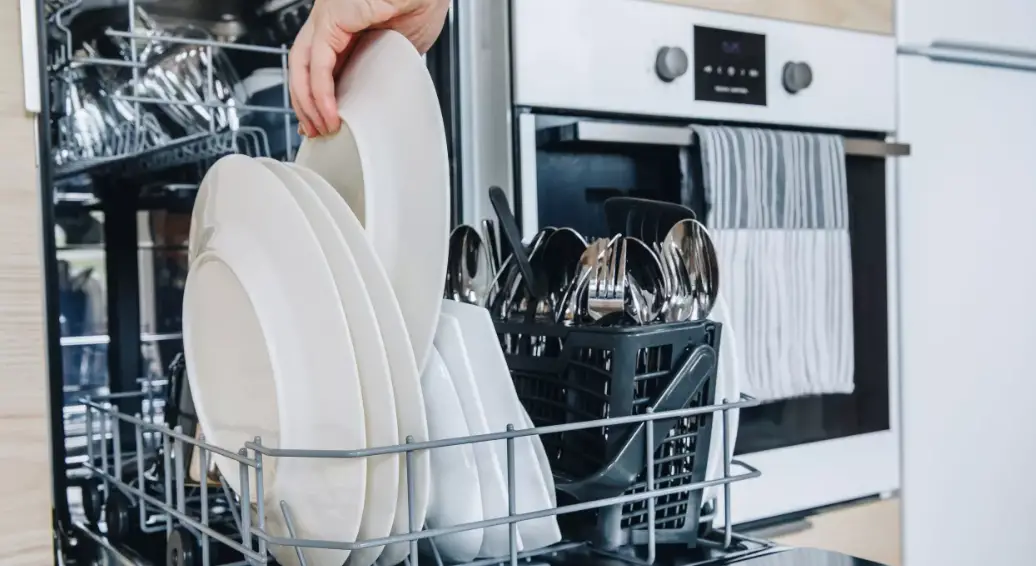
Make Sure The Appliance Is Loaded Properly
If your dishwasher’s dishes are still wet after a cycle, the first step to take is making sure that you have loaded it correctly. If dishes are blocking the spray arms or the detergent cup isn’t opened up, then you won’t get the full power of the wash cycle. Ensure that all items are tightly packed and nothing is obstructing the spray arms, so your dishwasher can provide you with optimal results.
Make Sure To Use Rinse Aid
If your dishwasher isn’t adequately drying dishes, one of the simplest solutions to consider is adding more rinse aid. This product helps the water sheet off your dishes instead of beading up and leaving behind residue. Without it, you’ll have wet dishes that don’t seem to dry no matter how long they sit in the dishwasher. For the best results, always use rinse aid when running your dishwasher and, if needed, adjust the setting depending on how much crockery you’re washing.
Make Sure To Open The Door After The Cycle Finishes

If your dishes are still wet after a cycle in the dishwasher, it could be because you neglected to open the door when it was completed. This is because the heat being generated during the cycle needs to escape in order to properly dry everything inside. To ensure the damp air is released, it’s recommended to open the door slightly as soon after a cycle finishes. This will help circulate fresh air into your space and provide relief from lingering moisture.
Make Sure To Activate The Tablet Detergent Function When Using Tablets
To ensure your tablets work at their full potential, it’s crucial to make sure the tablet detergent feature is enabled. This will ensure efficient cleaning and drying. Unlock the power of your dishwasher by activating its tablet detergent function with these easy instructions:
- To gain access to the control panel of your dishwasher, search for a button labeled either “Tablet” or “Power”.
- To trigger the tablet detergent feature, press and sustain down the button for a minimum of five seconds.
- Look for a light that says “Tablet” or “Power” on the control panel of your dishwasher to check if the function has been activated successfully.
Make Sure The Selected Programme Is Appropriate
If your dishes aren’t drying out when the dishwasher cycle is complete, ensure that you have selected a suitable program for optimal results. Most modern dishwashers are designed to dry dishes using a hot air cycle based on the programme settings.
Keep It In Mind That Plastic And Teflon Are Harder To Dry
Although your dishes, flatware and cookery should mostly air-dry effectively after a washing cycle in the dishwasher, it is essential to remember that plastic and teflon are more difficult for the machine to completely dry. If you experience that your plastic or teflon items are still wet after the dishwasher cycle is complete, there are a few steps you can follow to ensure they dry properly.
Avoid Washing Kitchenware With Deteriorated Surfaces
If you notice your dishes coming out of the dishwasher not fully dried, it is likely that the appliance has damaged surfaces. Washing items can leave water droplets on them, and the lack of sufficient heat may also stop complete drying. To avoid this issue, inspect your dishes and utensils before putting them in the dishwasher to ensure that they have smooth and intact surfaces.
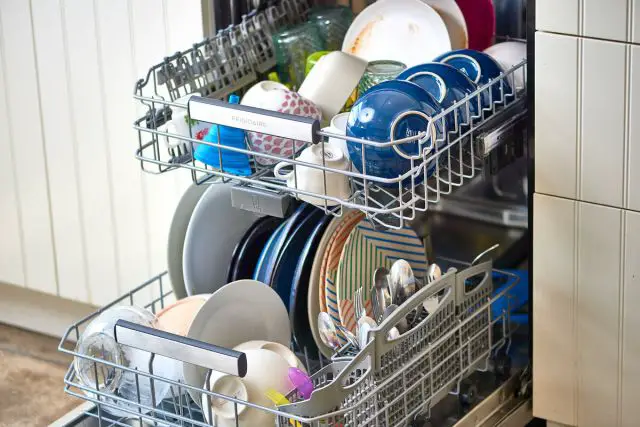
Consider Technical Problems
If your dishwasher is not drying properly, it may be due to a technical problem. Common issues that can cause this problem include:
- A faulty heating element
- A leaking door seal
- A defective rinse cycle
- Improper water temperature setting
- Inadequate detergent or rinsing agent
- A blocked drainpipe or filter
The Heating Element Is Faulty
A malfunctioning heating element can be the source of a dishwasher’s inability to dry dishes. A dishwasher’s heating element is responsible for reaching an appropriate temperature that will dry dishes effectively. If the heating element is malfunctioning, it could be caused by a mechanical issue or due to hard water deposits that accumulate over time. To fix this issue, you’ll need to first locate the heating element and then clean it or have it replaced if necessary. If the heating element is too far gone, you may need to purchase a new dishwasher altogether. [1]
How Much Does It Cost To Replace The Heating Element In A Dishwasher?
The cost to replace the heating element in a dishwasher can vary depending on the model of your dishwasher, as well as where you purchase it from. Most elements cost between $100 and $300. The installation of the new element is usually an easy job that can be done by yourself with some basic tools. In some cases, however, it might be more cost effective to hire a professional for the job, especially if you are not familiar with appliance repairs. It is important to research your dishwasher model to determine exactly what type and size of heating element you need before purchasing a new one.

It is important to note that not all dishwashers will require the same type or size of heating element. Therefore, it is important to familiarize yourself with your dishwasher model and its compatibility before purchasing a new element. [2]
Does Rinse Aid Help Dry Dishes?
Absolutely, utilizing rinse aid can help to ensure your dishes are dried thoroughly. Rinse aid is a product that helps keep water from beading up on the dishes and silverware after they have been washed. This prevents water droplets from forming which speeds up the drying process. Although you may need to towel dry certain items, adding rinse aid in your dishwasher will significantly reduce the time you spend manually drying.
When using rinse aid, you should use about 1 teaspoon for every cycle to ensure adequate coverage for your dishes and silverware. Additionally, adding a bit of vinegar to your dishwashing detergent can also help with drying and minimize water droplets on the dishes. [3]
Tips To Fixing Dishwasher Not Drying
Check the wash cycle settings: If your dishwasher is not drying properly, it could be due to a wrong setting of the wash cycle. Make sure you’re using the right kind of wash cycle—most likely a longer one—and that you have selected the “heated dry” option if available.
Clean out the filters: Dirty filters can cause poor drying performance, as they trap moisture and make it harder for the dishwasher to dry dishes efficiently. Make sure you clean out the filter regularly according to manufacturer instructions.
Check for blockages: Sometimes food particles or other debris can get lodged in your dishwasher and cause blockages. Check for any obstructions in the filter, drain hose, or impeller.
Check the float switch: The float switch is a device inside your dishwasher that detects water level and regulates drainage. If it’s defective, then it won’t detect proper water levels and could lead to poor drying performance.
Use rinse aid: Rinse aid is a detergent additive that helps speed up the drying process. Make sure you’re using it regularly, according to manufacturer instructions.
Replace faulty parts: If none of these tips work, then it could be due to a defective part in your dishwasher. You can check for faulty parts such as heating elements, thermostats, fans etc., and replace them if necessary. [4]
FAQ
Why is everything still wet in my dishwasher?
If everything in your dishwasher is still wet after a cycle, it may be due to the water not being hot enough. Make sure the temperature of your hot water heater is set to its highest level, as this will help hasten the evaporation process and dry dishes more rapidly. It should be between 120°F (49°C) and 140°F (60°C). You may also need to adjust the timer or settings on your dishwasher so that it runs longer and is able to dry items more effectively. Additionally, make sure all of the vents and filters are clear as a clogged vent or filter could prevent air circulation and impede drying.
How can I get my dishwasher to dry?
If your dishes are still wet, there’s no need to panic! With just a few simple steps, you can get that dishwasher back in proper working order.
- Check the water temperature – Dishwashers require hot water (120 degrees Fahrenheit) in order to effectively clean and rinse dishes. You may need to adjust your hot water heater or check the cold water supply to ensure it is hot enough.
- Check the rinse cycle – If your dishwasher has an adjustable rinse cycle, make sure it is set to a long enough duration. Increasing the length of the rinse cycle will help improve drying performance.
- Clean or replace the filters – Dirty filters can impede water flow and reduce the effectiveness of the drying cycle. Check your dishwasher’s filter and clean or replace it as necessary.
- Make sure the door is closed properly – Make sure that the door remains closed during the drying cycle in order for the heat to remain inside, helping dishes dry faster.
- Increase the rinse aid setting – Rinse aids help reduce spotting and streaking, and may help improve drying performance. Check the manufacturer’s instructions to determine how much rinse aid should be added.
How do I fix my dishwasher heating element?
The heating element helps create hot air to dry the dishes. If the device isn’t performing properly, then it may be time to upgrade.
Changing out your dishwasher’s heating element is an uncomplicated undertaking that can be finished in no time, usually within 60 minutes. Before you begin, make sure to first unplug the power source of your dishwasher and then detach its lower panel. Once you have access to the heating element, you can unscrew it from its mountings, making sure to keep track of the wiring. Then, you can replace the old heating element with a new one and reconnect the wiring in its original configuration.
Finally, you can secure the new heating element in place and reattach the lower panel. Once this is done, your dishwasher will be able to generate hot air to properly dry your dishes.
Should dishes be completely dry after the dishwasher?
No, it is not necessary to have completely dry dishes after a cycle in the dishwasher. In fact, some residual water droplets are normal and expected. However, if dishes do not seem to be drying appropriately from one cycle to the next, there may be an issue with the appliance.
Does vinegar help dry dishes in the dishwasher?
Vinegar is a great all-purpose cleaner and can help with many dishwasher problems, including not drying dishes properly. To use vinegar to dry dishes in the dishwasher, simply add one cup of white vinegar to the bottom of your empty dishwasher and run it on its hottest setting. This will help remove any residue left behind from previous cycles and will also help to loosen hardened food particles stuck on dishes or the interior of the dishwasher. However, it is important to note that vinegar will not be effective at drying plastic items as these materials are not porous and cannot absorb liquid. For a more thorough cleaning, you may want to run multiple cycles with vinegar added each time.
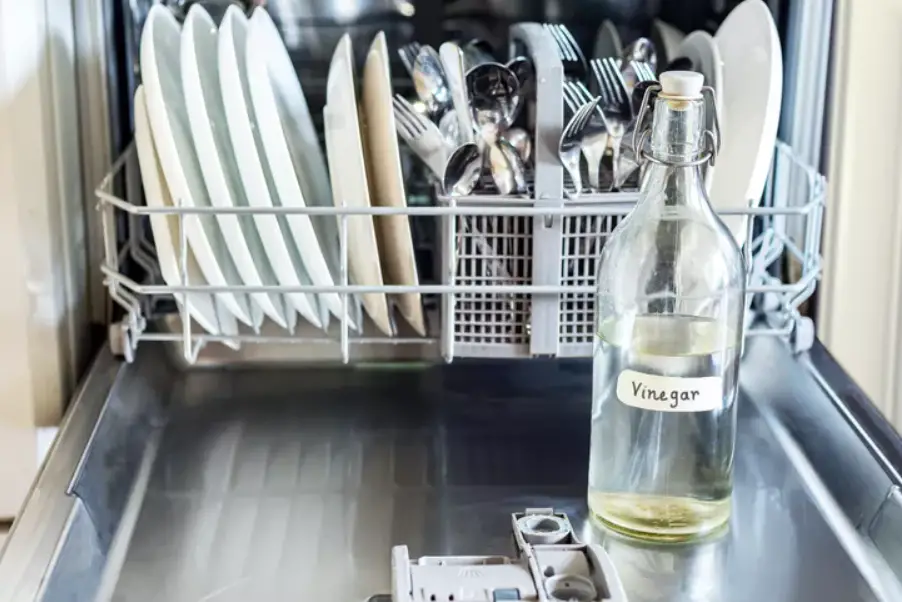
Why does the dishwasher not dry completely?
If your dishwasher fails to dry dishes effectively, it could be due to a few distinct reasons. Clogged vents are one of the most prevalent culprits behind inconveniences. The vent helps circulate hot air and moisture to help dry the dishes during the drying cycle. If it is blocked, then this process isn’t happening properly, leading to damp or wet dishes after the cycle is complete. Another potential cause could be a defect in the heating element or thermistor, which are used to control the temperature and drying time. If these components aren’t functioning correctly, it can prevent the dishwasher from properly heating and drying dishes. Finally, it’s possible that the water level isn’t high enough for proper cleaning. If the water level is too low, then dishes may not be rinsed and dried properly during the cycle, leading to wet dishes.
Should you leave the dishwasher door open to dry?
Absolutely not! Leaving the dishwasher door open to dry will lead to detrimental effects. While it may appear to be a speedy approach, this method of drying can actually do more damage than good. A dishwasher needs a tight seal so that steam can’t escape. If you leave the door open, too much heat and moisture in the air can escape, causing dishes to remain wet.
How do dishwashers dry without heat?
Most modern dishwashers use a combination of air circulation and evaporation to dry dishes. A fan circulates the hot, humid air around the dishes, helping to evaporate any remaining water. This air is then exhausted out of the dishwasher, allowing the dishes to cool down and dry. This process is known as condensation drying and is the most common way that dishwashers dry dishes.
Is it worth fixing a dishwasher heating element?
The heating element is a key component of the dishwasher that is responsible for drying dishes. If the heating element fails it will cause your dishes to remain wet after a full wash cycle. When this happens, you have a few options to get your dishwasher back up and running.
Before making any decisions, ask yourself whether it is better to tackle the dishwasher heating element repair on your own or seek professional help. Replacing a dishwasher heating element can be a difficult task and getting it wrong could cause further damage to the dishwasher. If you are experienced in DIY repairs and are confident you can replace the heating element correctly, then it may be worth fixing yourself. However, if you are not sure or do not have the right tools it is probably best to call a professional.
How do you know if the heating element has gone?
If your dishes aren’t drying adequately, the most likely culprit is a problem with the heating element of your dishwasher. If the heating element is malfunctioning, it will hinder the dishwasher from reaching its optimal temperature, thus resulting in moist dishes that won’t dry all the way. The most common signs that your heating element has gone bad are if the dishes remain wet and cold after a cycle, or if you hear a buzzing sound coming from the dishwasher during use.
Useful Video: GE Dishwasher not HEATING or DRYING or CLEANING dishes? TOP 4 FIXES
Conclusion
If your dishwasher is failing to dry dishes, this straightforward diagnostic guide can help you uncover the source of the difficulty and supply solutions to get it up and running again. Always start with the most basic solutions first, like running a rinse cycle or checking for clogged hoses and filters. If those don’t help, go through the more advanced steps of cleaning out the interior and running self-cleaning cycles to get your dishwasher working again. If after all these steps your dishwasher still isn’t drying dishes, it may be time to contact a professional repair technician or replace the appliance altogether.
References
- https://www.beko.com/en-en/support/dishwasher–troubleshooting–article/how-to-fix-a-dishwasher-that-won-t-dry-properly
- https://www.realhomes.com/advice/dishwasher-not-drying
- https://www.hwahomewarranty.com/learning-center/homeowners/why-is-my-dishwasher-not-drying
- https://www.bobvila.com/articles/dishwasher-not-drying/





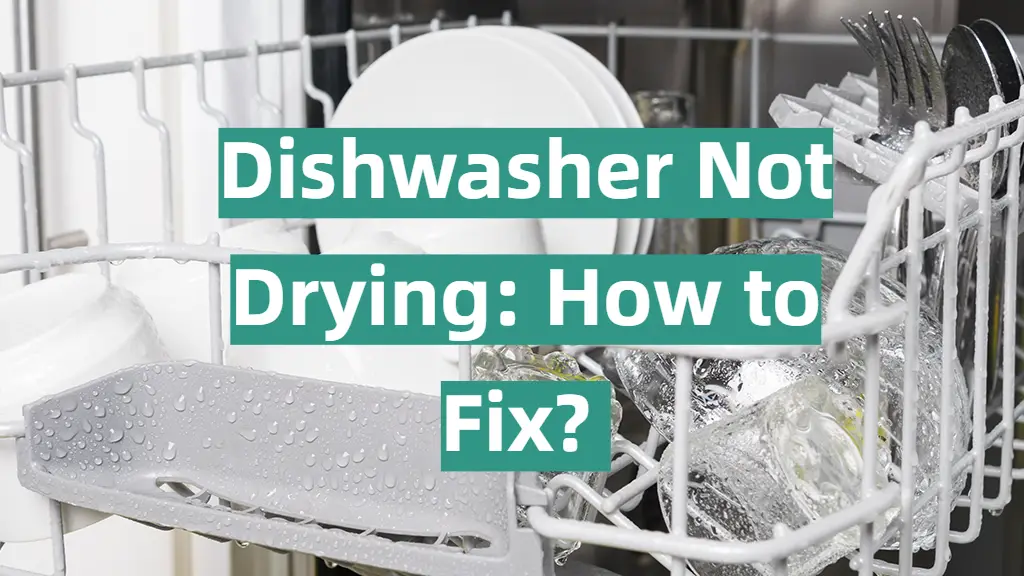





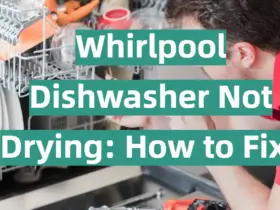
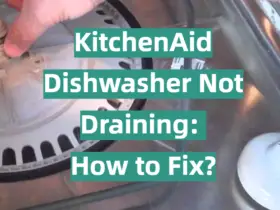
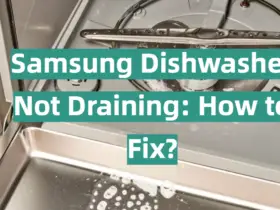
Leave a Reply